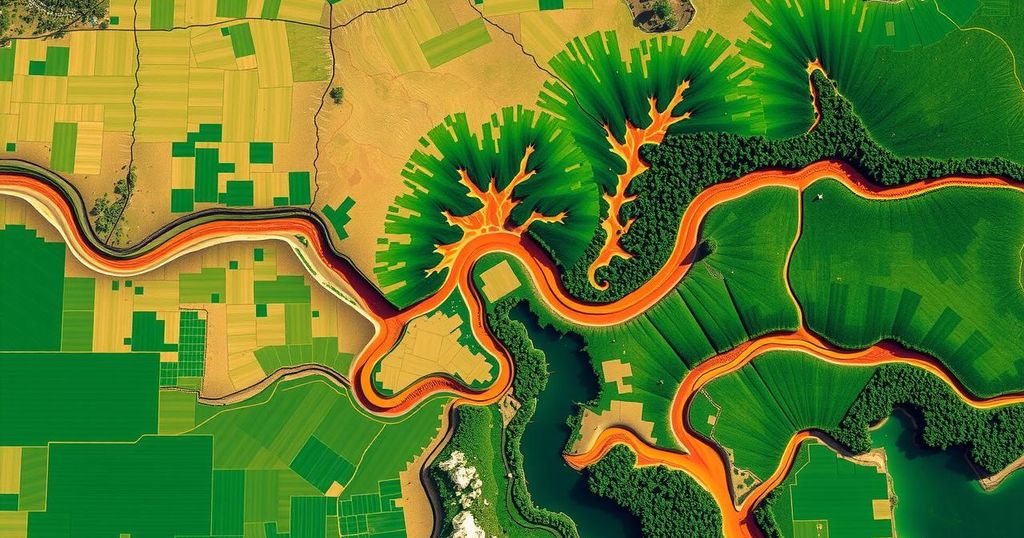Exploring the Ecological Wonders of Waza National Park, Cameroon
Waza National Park in northern Cameroon, a UNESCO biosphere reserve, is renowned for its rich biodiversity and spans 1,700 square kilometers. The adjacent Logone floodplain is essential for local populations, relying on seasonal flooding for agriculture and fishing, characterized by distinct wet and dry seasons.
The Copernicus Sentinel-2 mission adeptly captures the breathtaking landscape surrounding Waza National Park in northern Cameroon. This national park borders Chad to the east and Nigeria to the west, encompassing an area of 1,700 square kilometers, situated merely 10 kilometers from each border.
Waza National Park is distinguished as Cameroon’s most diverse wildlife reserve, home to species such as lions, elephants, giraffes, and various birds. It was designated a UNESCO World Heritage biosphere reserve in 1979, confirming its ecological significance.
To the west of the park lies the town of Waza, identifiable as a small yellowish area surrounded by green land. The expansive green region nearby is the Logone floodplain, part of the Lake Chad basin, benefiting from seasonal flooding that nourishes the diverse flora.
This article highlights the ecological significance of Waza National Park and the surrounding regions in Cameroon. As a UNESCO World Heritage site, it houses a rich variety of wildlife while the adjacent Logone floodplain supports local communities through agriculture and fishing. The cyclical nature of the region’s wet and dry seasons plays a crucial role in sustaining both the ecosystem and human livelihoods.
Original Source: www.esa.int




Post Comment